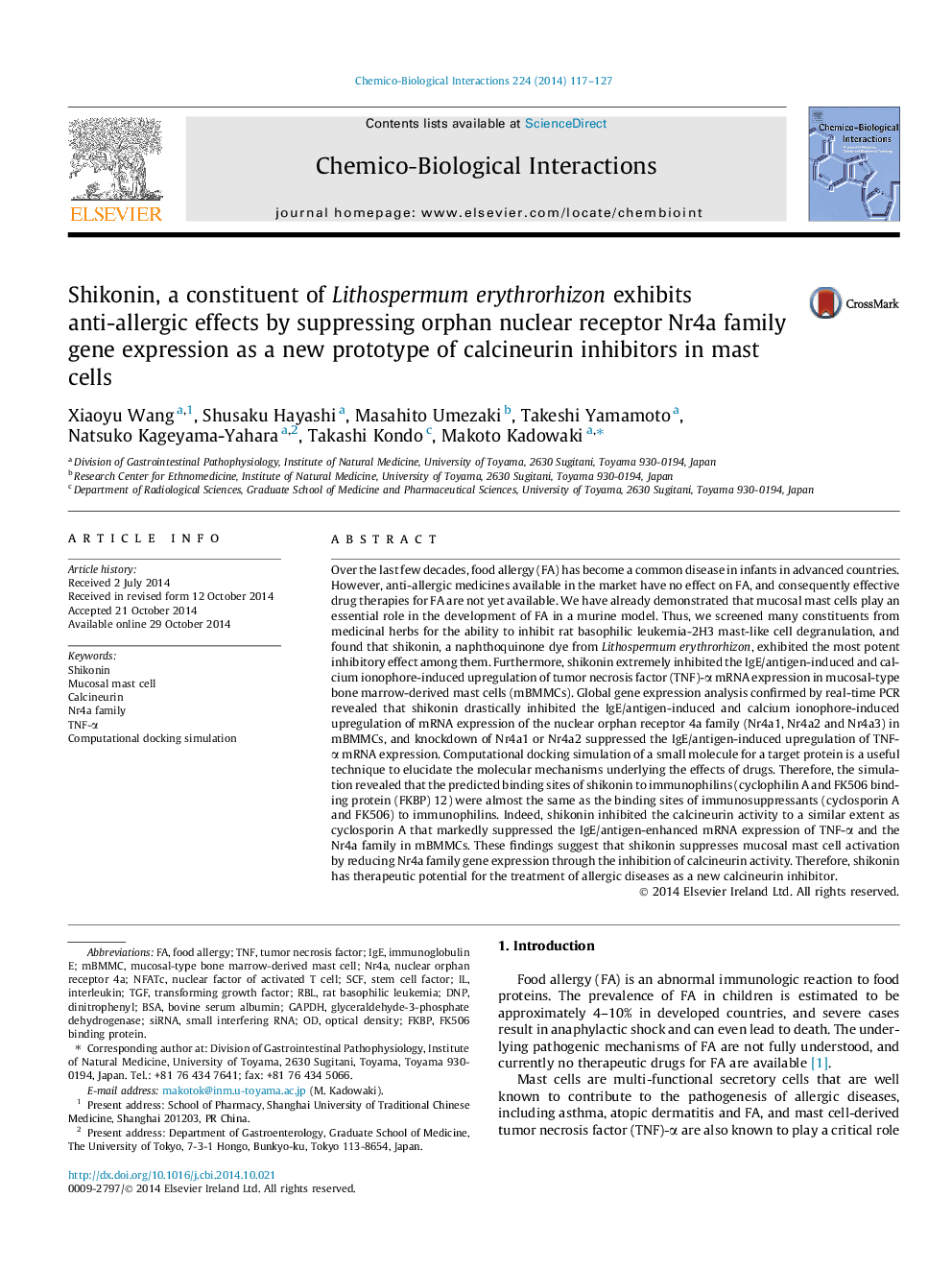| Article ID | Journal | Published Year | Pages | File Type |
|---|---|---|---|---|
| 2580382 | Chemico-Biological Interactions | 2014 | 11 Pages |
•We screened many constituents from medicinal herbs for the suppression of mast cells.•Shikonin from Lithospermum erythrorhizon exhibited the most potent inhibitory effect.•Shikonin suppressed upregulated expression of Nr4a family mRNA.•Computational simulation revealed the predicted binding of shikonin to immunophilins.•Shikonin inhibited calcineurin activity to a similar extent as cyclosporin A.
Over the last few decades, food allergy (FA) has become a common disease in infants in advanced countries. However, anti-allergic medicines available in the market have no effect on FA, and consequently effective drug therapies for FA are not yet available. We have already demonstrated that mucosal mast cells play an essential role in the development of FA in a murine model. Thus, we screened many constituents from medicinal herbs for the ability to inhibit rat basophilic leukemia-2H3 mast-like cell degranulation, and found that shikonin, a naphthoquinone dye from Lithospermum erythrorhizon, exhibited the most potent inhibitory effect among them. Furthermore, shikonin extremely inhibited the IgE/antigen-induced and calcium ionophore-induced upregulation of tumor necrosis factor (TNF)-α mRNA expression in mucosal-type bone marrow-derived mast cells (mBMMCs). Global gene expression analysis confirmed by real-time PCR revealed that shikonin drastically inhibited the IgE/antigen-induced and calcium ionophore-induced upregulation of mRNA expression of the nuclear orphan receptor 4a family (Nr4a1, Nr4a2 and Nr4a3) in mBMMCs, and knockdown of Nr4a1 or Nr4a2 suppressed the IgE/antigen-induced upregulation of TNF-α mRNA expression. Computational docking simulation of a small molecule for a target protein is a useful technique to elucidate the molecular mechanisms underlying the effects of drugs. Therefore, the simulation revealed that the predicted binding sites of shikonin to immunophilins (cyclophilin A and FK506 binding protein (FKBP) 12) were almost the same as the binding sites of immunosuppressants (cyclosporin A and FK506) to immunophilins. Indeed, shikonin inhibited the calcineurin activity to a similar extent as cyclosporin A that markedly suppressed the IgE/antigen-enhanced mRNA expression of TNF-α and the Nr4a family in mBMMCs. These findings suggest that shikonin suppresses mucosal mast cell activation by reducing Nr4a family gene expression through the inhibition of calcineurin activity. Therefore, shikonin has therapeutic potential for the treatment of allergic diseases as a new calcineurin inhibitor.
